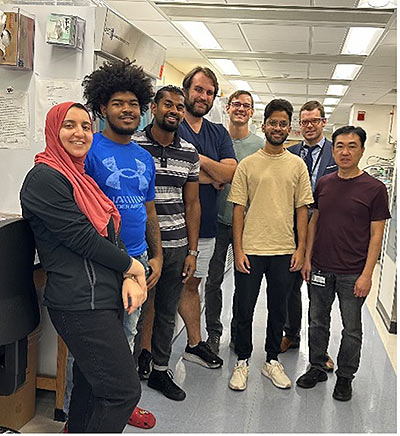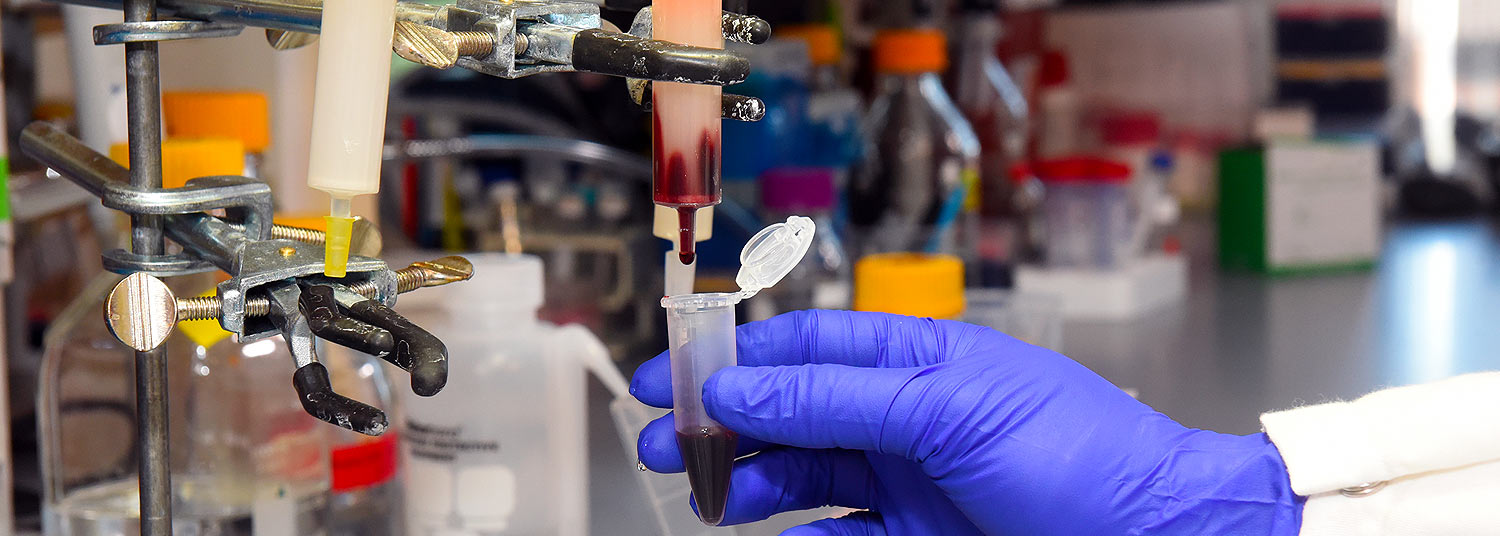Nitric Oxide and Heme Biochemistry
Our Research
 The mechanisms for nitric oxide (NO) formation and signaling in the red blood cell (RBC) via chemical reduction of nitrite and RBC “endothelial” NO synthase enzyme (RBC eNOS) have been well characterized. However, the mechanism by which erythrocytic NO manages to avoid autocapture and dioxygenation by abundant deoxy- and oxy-hemoglobin remains incompletely explained. One solution we have recently considered is that NO binds labile ferrous heme to make ferrous nitrosyl-heme (NO-ferroheme), shielding otherwise ephemeral NO from sequestration and oxidation. We have characterized a novel fast chemical reaction, thiol-catalyzed reductive nitrosylation, which converts labile pools of oxidized (ferric) heme in the presence of a thiol such as glutathione to NO-ferroheme. This NO-ferroheme shields the NO moiety from scavenging by hemoglobin, is readily formed under physiological conditions, and when transported bound to albumin, potently vasodilates the circulation and inhibits platelet activation (DeMartino et al Nat Chem Biol 2023). My laboratory now seeks to fully characterize NO-ferroheme signaling, cell and tissue transporting mechanisms, and potential druggable applications in vascular diseases states such as severe hypertension and PH work.
The mechanisms for nitric oxide (NO) formation and signaling in the red blood cell (RBC) via chemical reduction of nitrite and RBC “endothelial” NO synthase enzyme (RBC eNOS) have been well characterized. However, the mechanism by which erythrocytic NO manages to avoid autocapture and dioxygenation by abundant deoxy- and oxy-hemoglobin remains incompletely explained. One solution we have recently considered is that NO binds labile ferrous heme to make ferrous nitrosyl-heme (NO-ferroheme), shielding otherwise ephemeral NO from sequestration and oxidation. We have characterized a novel fast chemical reaction, thiol-catalyzed reductive nitrosylation, which converts labile pools of oxidized (ferric) heme in the presence of a thiol such as glutathione to NO-ferroheme. This NO-ferroheme shields the NO moiety from scavenging by hemoglobin, is readily formed under physiological conditions, and when transported bound to albumin, potently vasodilates the circulation and inhibits platelet activation (DeMartino et al Nat Chem Biol 2023). My laboratory now seeks to fully characterize NO-ferroheme signaling, cell and tissue transporting mechanisms, and potential druggable applications in vascular diseases states such as severe hypertension and PH work.
Team Members
Anthony (Tony) DeMartino, PhD
Assistant Professor of Medicine

Alay Gandhi
Research Technician Assistant

Neha Eldho
Research Assistant

John (Hyon) Hwang, MS
Laboratory Manager

Jason Rose, MD, MBA
Associate Professor of Medicine

Qinzi Xu, MD
Assistant Professor of Medicine

Publications:
DeMartino AW, Poudel L, Dent MR, Chen X, Xu Q, Gladwin BS, Tejero J, Basu S, Alipour E, Jiang Y, Rose JJ, Gladwin MT, Kim-Shapiro DB. "Thiol-catalyzed formation of NO-ferroheme regulates intravascular NO signaling." Nat Chem Biol (2023). DOI: 10.1038/s41589-023-01413-3
DeMartino AW, Amdahl MB, Bocian KA et al. “Tunable redox sensor properties of human cytoglobin allosterically regulate heme pocket reactivity.” Free Radical Bio Med (2021), 162, 423-434. DOI: 1016/j.freeradbiomed.2020.10.321
Xu Q, Rose JJ, Chen X, DeMartino AW, et al. “Cell-free and alkylated hemoproteins improve survival in mouse models of carbon monoxide poisoning.” JCI Insight 2022), 7 (21), e153296. DOI: 10.1172/jci.insight.153296
DeMartino AW, Rose JJ, Amdahl MA et al. “No evidence of hemoglobin damage by SARS-CoV-2 infection.” Haematologica (2020),105 (12), 2769-2773. DOI: 3324/haematol.2020.264267
DeMartino AW, Kim-Shapiro D, Patel R, Gladwin MT. “Nitrite and nitrate chemical biology and signalling.” Bri J Pharmacol (2019), 176 (2), 228-245. DOI: 1111/bph.14484

